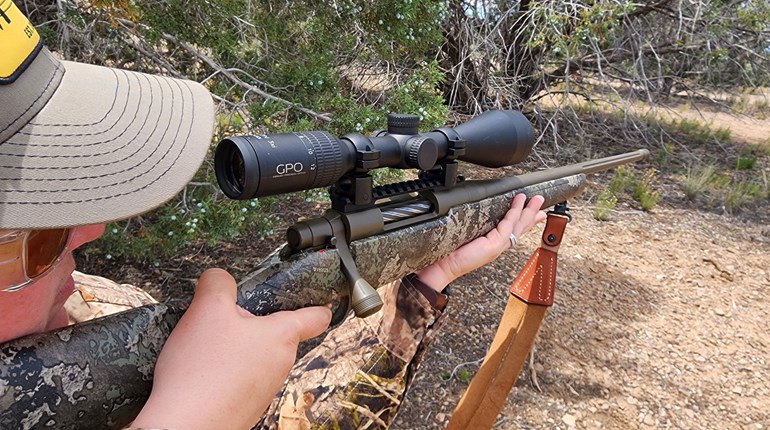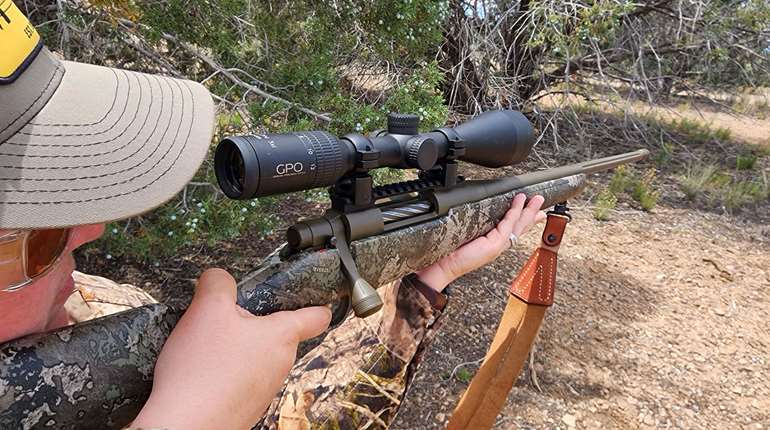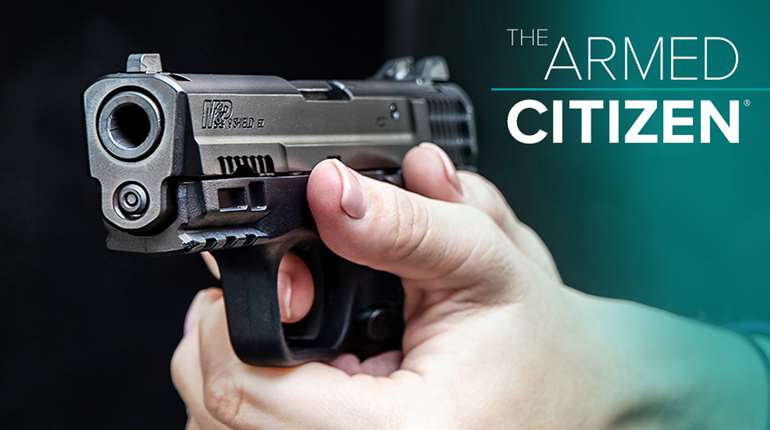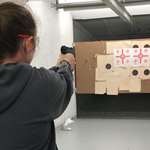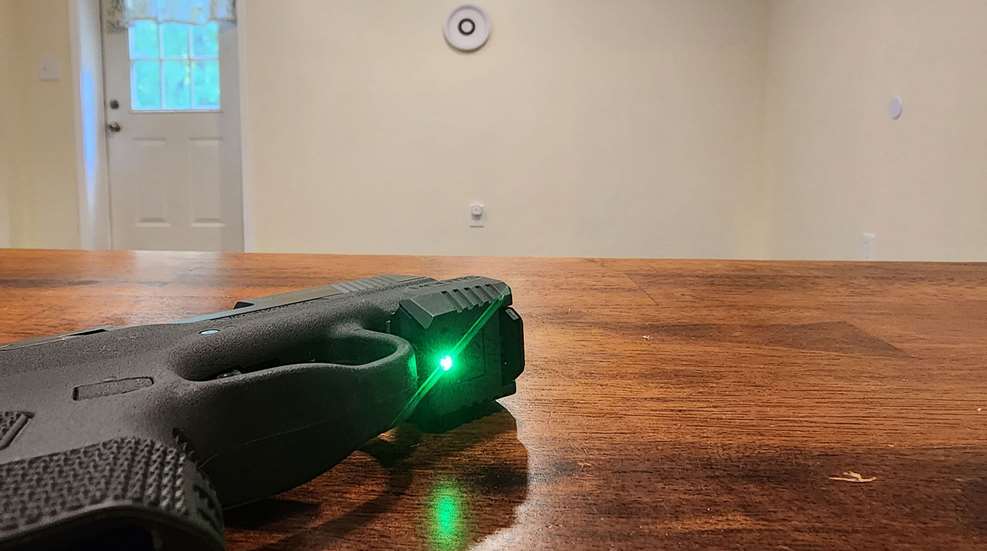
We’ve said it again and again: You can vastly improve your shooting skills with dry-fire practice at home. Dry-firing has a lot of pros: It’s free, you can do it without leaving the house, and it’s incredibly effective when done properly. Unfortunately, most of us will admit that dry-fire practice just isn’t that interesting. Squeezing triggers and getting no reaction can quickly get boring or monotonous.
Fortunately, there are some tricks you can incorporate to make your dry-fire more entertaining—and the more fun you have with it, the more you’ll actually do it. Before we get started, make sure you have a safe place for your dry-fire practice. A safe backstop is a good idea, and make sure there is no ammo in the room. Triple-check that your gun is unloaded before you begin.
The easiest way to make dry-fire fun is with a training tool like the MantisX. This system incorporates a small Bluetooth device you stick on your gun that lets it communicate with an app on your phone. It will give you data with each trigger pull about how much gun movement you had (graphed out so you can see if you tend to pull in one direction or the other) and all sorts of other things. It offers specific drills you can work through and will even give you feedback on what you’re doing wrong and how to improve. They’re not terribly expensive, but if this kind of training tool isn’t in your budget or doesn’t interest you, you can keep training interesting with the following tips.
Pick a Skill to Work On
Just pulling the trigger over and over gets dull fast, and while you might get good at trigger squeezing, you’re skipping over a lot of other skills that you can sharpen with dry-firing. Each time you do a dry-fire session, pick a specific skill you want to work on. Need ideas? Try training one or two of these per session, for starters:
- Your draw, from underneath winter clothes and summer clothes, or from a purse. How quickly can you bring the gun to a firing position?
- Target acquisition/gun mount with a rifle, if you have enough space. How quickly can you mount the gun and find the target in your scope?
- Shotgun move and mount. Try the flashlight drill to help you work on this.
- Shotgun “lead” sight pictures. OSP Shooting School’s three-bullet drill is great for this.
- Single-handed draw or weak-side dry-fire, in case you’re ever forced to operate your gun without two hands.
- Trigger pull, particularly if you have a flinch. This work with rifles, handguns or shotguns.
- Getting into and out of different hunting positions, like kneeling, getting prone or using sticks. How fast can you go from standing to kneeling with the target in your sights?
- Fast reloads, using snap caps in a rifle or spare magazines for your handgun.
Mix It Up
You’ll probably want to start with drawing, presenting and dry-firing your concealed-carry handgun. Once you get in a good place where you feel comfortable with those steps, you’ll keep training them to speed up, but you can start to add in different variables. Switch to a smaller or larger gun. Switch to a revolver. Try a shotgun or AR-15 or bolt-action rifle. Training a different skill each time you dry-fire can keep things from getting monotonous.
Don’t Push It
When it comes to physical exercise, experts tell us that several short, 10-minute workouts are as good as one long, marathon session. As far as I’m concerned, the same is true for shooting practice. Keep it short and sweet. The longer it goes, the greater your chances of getting bored. When it becomes monotonous, you’ll stop paying attention and doing your best, and then the practice is pointless or even detrimental, because your form will suffer. The old saying is wrong: Practice does not make perfect. Only perfect practice makes perfect. Doing it incorrectly can be worse than not doing it at all.
Only dry-fire as long as you are able to do it properly, striving for perfect form and giving it your full concentration. If either of those starts to fall off as your body or brain fatigues, it’s time to quit.
Keeping your training sessions short has an additional benefit, too: It trains you to do it right the first time. I once heard an accomplished bowhunter say that his primary practice is to go out and shoot one single arrow a day. His reasoning is that if he can’t get the job done with his first arrow when he’s hunting, he won’t get a second chance, so the first one had better be the best one he can do. That philosophy applies to self-defense, competition shooting and gun hunting, too: You won’t get a warmup or a practice shot, so make the first one count.
Take a Break When You Need It
Every competitive shooter I’ve interviewed over the years has told me the same thing: When the season ends, they don’t pick up the gun again for several weeks or even a couple of months. They need a break to reset so they can come back fresh and remember why they love shooting. It might be the same with you: If you get burned out on dry-fire, take a couple of weeks off and see how you feel. Sometimes this can even be helpful, as it gives your brain time to absorb some of the lessons you’ve been trying to drill.












